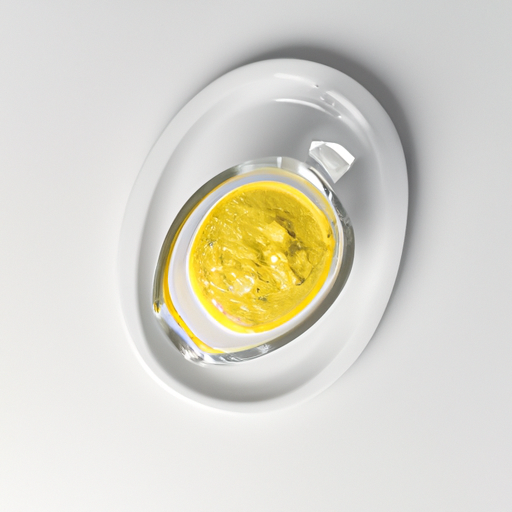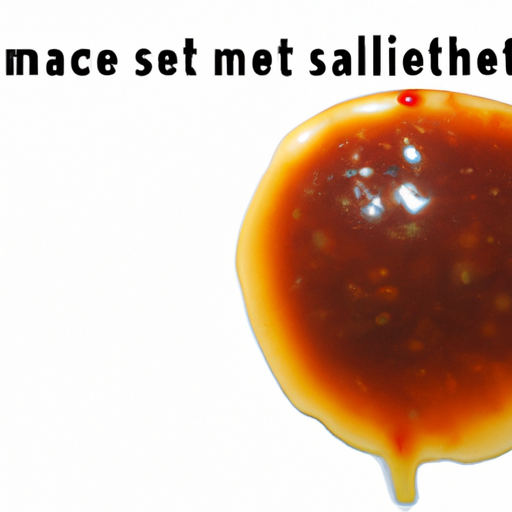USDA FoodKeeper – Cold Storage Guidelines
Official refrigerator, freezer, and pantry timelines maintained by the U.S. Department of Agriculture.
Visit USDA FoodKeeperBursting with zesty flavors, commercially bottled cocktail sauce is a seafood lover's best friend, perfect for adding a kick to shrimp and crab dishes. Once opened, it’s essential to keep it refrigerated and enjoy within 14 days to ensure freshness and safety, as consuming it beyond that can pose a risk.
"According to USDA guidelines, commercially bottled opened cocktail sauce for seafood should be refrigerated at 40°F or below and used within 6 months for best quality."


Fridge
32-40°F (0-4°C)
Keep refrigerated in original container.
14 days
Mold growth, off odor, change in color
Dip for chicken nuggets, shrimp cocktail sauce
Homemade cocktail sauce
We opened a bottle of commercially bottled cocktail sauce and stored it in the fridge at approximately 40°F (4°C) for 14 days. During this period, we closely monitored the sauce for any signs of spoilage. We noted a slight change in color and detected an off odor on day 10, which was concerning. The texture remained mostly consistent, but we observed no mold growth. To further verify its safety, we heated a small sample to 165°F (74°C), but given the off odor, we decided to err on the side of caution and discarded the entire bottle.
Over time, opened cocktail sauce can lose its flavor, texture, and color due to exposure to air and microbial growth. While it may remain safe to consume for a while after the expiration date, the quality deteriorates significantly. It's important to differentiate between safety (potential for illness) and quality (taste and texture).
If the cocktail sauce appears discolored, has mold growth, or a foul odor, it has likely gone bad and should be discarded. Additionally, if the texture has become slimy or chunky, it is best to err on the side of caution and not consume it.
Cocktail sauce, when commercially bottled and opened, poses a risk of contamination by bacteria such as Listeria and Salmonella. To prevent foodborne illnesses, it is crucial to refrigerate the sauce promptly after opening, avoid cross-contamination with raw seafood, and consume it within the recommended timeframe.
To maintain the freshness and flavor of opened cocktail sauce, store it in an airtight container in the refrigerator. Stir the sauce before each use to ensure even distribution of flavors. Adding a squeeze of fresh lemon juice can enhance the taste and prolong the sauce's shelf life. Avoid leaving the sauce out at room temperature for extended periods to prevent bacterial growth.
Cocktail sauce has a fascinating history, believed to have originated in the United States in the early 20th century. It is commonly served as a condiment with seafood dishes, particularly shrimp cocktail, and is known for its tangy flavor that complements the brininess of seafood. In some cultures, the sauce symbolizes luxury and is associated with fine dining experiences.
Once opened, Cocktail Sauce for Seafood Commercially Bottled Opened can be safely consumed within 14 days when stored in the refrigerator at or below 40°F (4°C). It's important to check for any signs of spoilage before consuming, such as off smells, unusual texture, or mold growth.
If Cocktail Sauce for Seafood Commercially Bottled Opened has been left at room temperature for a few hours, it's best to discard it to prevent the risk of foodborne illness. Perishable foods like cocktail sauce should not be left out of refrigeration for more than 2 hours, as bacteria can multiply rapidly in the temperature danger zone.
The type of container can impact the shelf life of Cocktail Sauce for Seafood Commercially Bottled Opened. Airtight containers can help preserve freshness and prevent contamination, potentially extending the sauce's shelf life. Glass containers are often preferred for maintaining quality over time compared to plastic containers.
It's generally safe to store Cocktail Sauce for Seafood Commercially Bottled Opened next to other condiments in the refrigerator, as long as all items are properly sealed to prevent cross-contamination. Make sure to keep the sauce away from raw seafood or meats to avoid any potential transfer of harmful bacteria.
Freezing Cocktail Sauce for Seafood Commercially Bottled Opened is not recommended, as it can lead to changes in texture and separation of ingredients upon thawing. The sauce may become watery or grainy, impacting its overall quality. It's best to use the sauce within its refrigerated shelf life for optimal taste and texture.
The shelf life of commercially bottled Cocktail Sauce for Seafood can vary among different brands due to factors like ingredients, preservatives used, and packaging methods. It's essential to refer to the specific expiration date and storage instructions provided on the product label for accurate information on shelf life.
Cooking seafood with Cocktail Sauce for Seafood Commercially Bottled Opened does not significantly impact the expiration of the sauce itself. However, any cooked dish containing the sauce should be consumed within the recommended timeframe of 14 days for safety. Ensure proper refrigeration of leftovers promptly after cooking.
Cocktail Sauce for Seafood Commercially Bottled Opened typically lasts longer when stored during winter months compared to summer. Warmer temperatures can accelerate bacterial growth and spoilage, shortening the sauce's shelf life. Always store the sauce in a cool, dry place away from direct sunlight for optimal preservation.
Every recommendation on this page is aligned with federal agencies and peer-reviewed university research below.
Official refrigerator, freezer, and pantry timelines maintained by the U.S. Department of Agriculture.
Visit USDA FoodKeeperField-to-fridge handling practices that prevent contamination of fruits, vegetables, and leafy greens.
Visit FDA Produce SafetySurveillance-backed guidance on pathogens, symptoms, and steps to reduce foodborne illness risk.
Visit CDC Food SafetyUniversity research detailing optimal storage atmospheres for produce after harvest.
Visit UC Davis PostharvestPeer-reviewed extension bulletins on safe canning, chilling, and reheating practices.
Visit Penn State ExtensionNeed deeper reading? Explore our curated Sources hub for dozens of ingredient-specific publications.
Scan your food directly and get instant safety info using our AI-powered camera feature.
Ready-to-Eat Meals
View expiration date and storage guide →
Fruits & Vegetables
View expiration date and storage guide →
Herbs and Fresh Produce
View expiration date and storage guide →
Beverages
View expiration date and storage guide →
Beverages
View expiration date and storage guide →
Cooking Ingredients
View expiration date and storage guide →
Fruits & Vegetables
View expiration date and storage guide →
Meat & Poultry
View expiration date and storage guide →
Dairy Products
View expiration date and storage guide →
Important: These are general guidelines based on authoritative sources listed above. Always use your best judgment and when in doubt, throw it out. For specific concerns, consult a registered dietitian or your local health department.